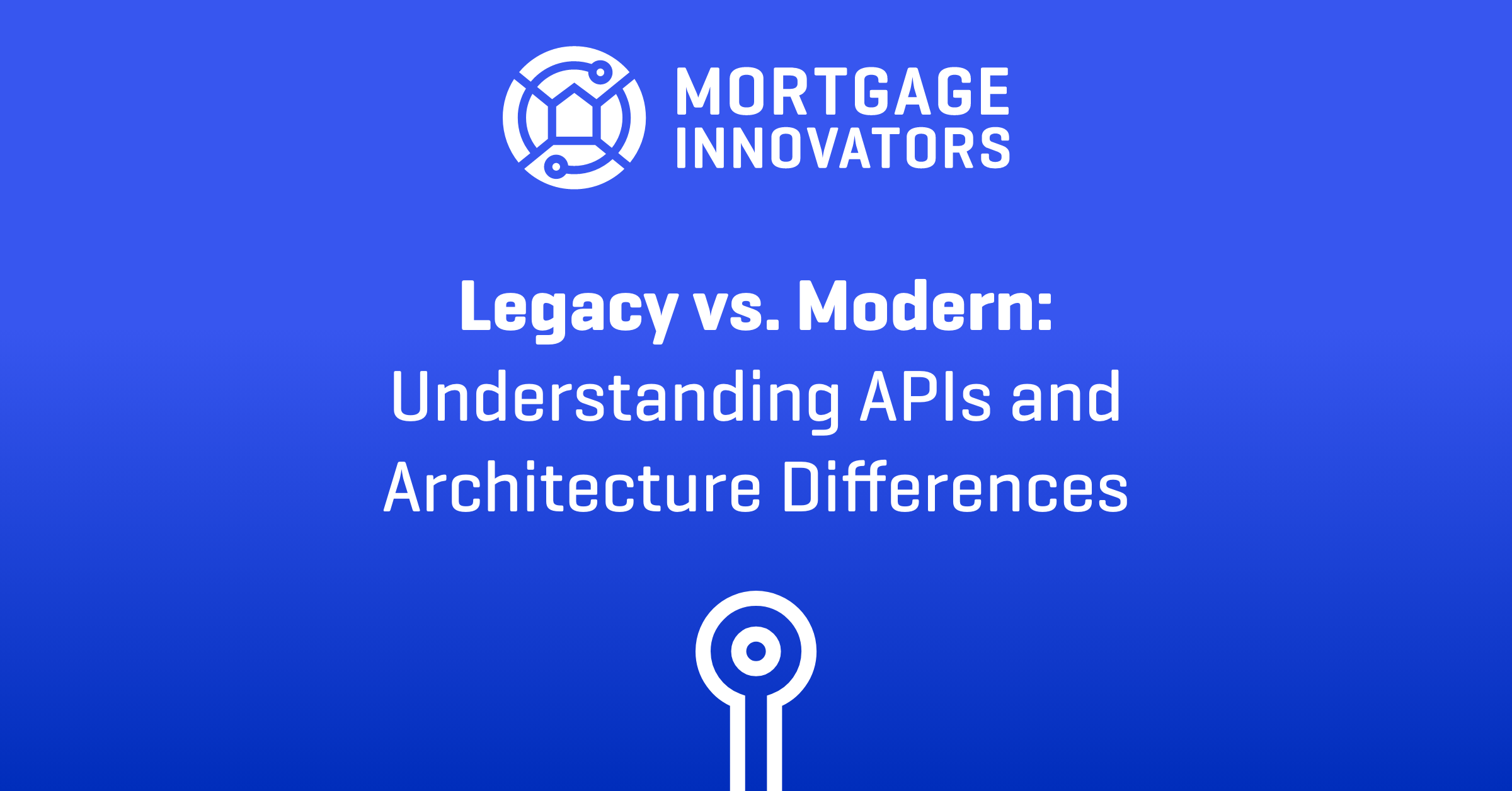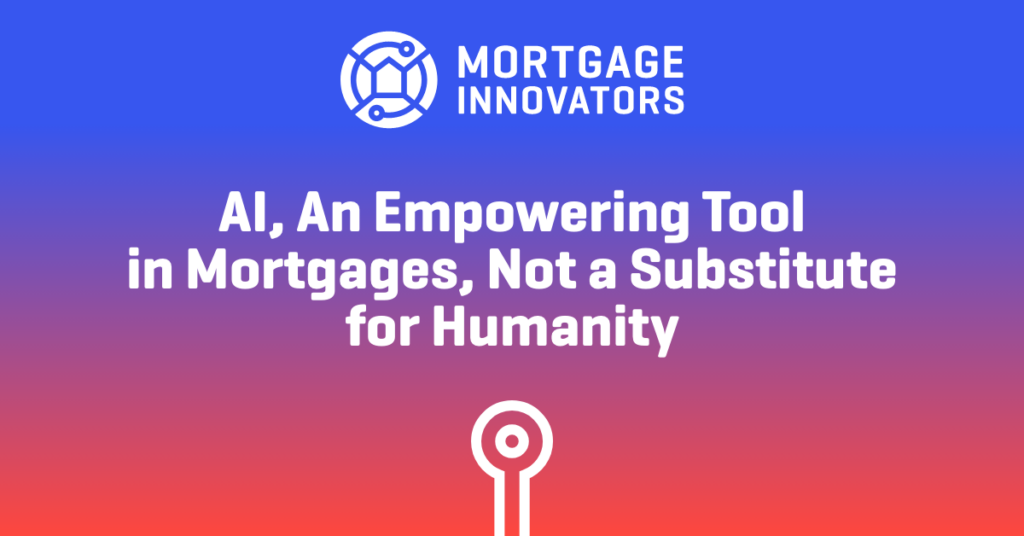Blog post by Lender Price
Having an API is a great way to increase efficiency and flexibility, but it’s not enough. Many pricing vendors claim they have an API when in fact it has not been properly implemented or well-tested. It is only after numerous rounds of refinement and testing that APIs can be considered mature enough to be truly effective. The next time someone mentions they have an API, it would be wise to ask who has implemented it and what the feedback was. By doing this, lenders can ensure they are getting the most out of the pricing vendor’s APIs and get the best value from their investment. An effective API is one that has been proven to work reliably, provides accurate data quickly, and offers scalability for future growth. When choosing an API, lenders need to make sure that all these criteria are met in order for it to provide them with long-term success.
The Benefits of APIs Over Legacy Systems
APIs offer several advantages over legacy systems. APIs are faster and more efficient, making them better suited for modern web development. They also make it easy for developers to get to data quickly using REST and GraphQL, both lightweight protocols. Additionally, APIs are easier to integrate with other applications, allowing lenders to rapidly create new products and services. Finally, APIs can be customized and scaled quickly, allowing lenders to adjust them as needed without incurring high costs or effort. Because of this, APIs are an excellent choice for any business that wants to increase its efficiency and productivity without sacrificing quality.
Modernizing Your Business with APIs
APIs are a powerful tool for modernizing your business. Lenders can easily and quickly create new products and services tailored to their customer’s needs by leveraging APIs. Also, APIs make it easier and faster for lenders to scale up, so they can grow without spending much on infrastructure. Also, APIs make it easier for companies to connect with partners outside of the company. This gives companies access to valuable data that can be used to make decisions. Finally, APIs provide an easy way for lenders to stay up-to-date with the latest technology trends and ensure their products remain competitive in a rapidly changing market.
Increasing Efficiency Through APIs
APIs are a great way to increase efficiency in your business. When lenders use vendor APIs, they can cut down on manual processes, automate more, and spend less time on tasks they repeatedly do. Also, APIs make it easy for companies to get data from outside sources quickly. This lets them make better decisions and act more rapidly than ever before. Furthermore, APIs enable lenders to integrate various applications easily, effectively streamlining operations and maximizing resources. Lastly, APIs give developers access to powerful tools that can be used for new projects or updates to existing apps without having to make new software from scratch. As a result, lenders looking to maximize productivity in their day-to-day operations will see increased efficiency across the board.
How To Leverage the Power of APIs
To leverage the power of APIs, lenders should first identify what needs can be met by APIs. Once the need is identified, lenders should determine which existing or new APIs can help fill that need. Additionally, lenders should assess the cost and effort associated with implementation to ensure they make a wise investment in resources. Furthermore, lenders should provide access to appropriate support when deploying an API, as it may require ongoing maintenance and troubleshooting. Lastly, lenders should review their data policies and security measures before connecting any third-party systems to protect themselves from possible risks. By thinking about these things, lenders can use APIs to their full potential and gain a competitive edge in the market.
Unlocking Value in Legacy Systems through APIs
Unlocking value in legacy systems through APIs can be an effective way for lenders to modernize existing applications and maximize their investment in them. Lenders can easily connect legacy systems with new applications and services by leveraging APIs, enabling them to integrate data and access powerful new features. Also, APIs make it easy for developers to make legacy systems last longer by building new solid services on top of existing code bases. Furthermore, APIs provide a secure way for lenders to share data without compromising security measures. Finally, APIs can act as a gateway between old systems and the latest technologies, allowing lenders to unlock real-time insights from their existing infrastructure that would otherwise remain inaccessible.
Legacy systems with APIs vs. Modern Systems with APIs
Legacy solutions currently used by Banks and Lenders use outdated software frameworks and technologies. These solutions may have APIs that allow them to interface with other solutions, but the functionality of these APIs may be limited and they may not adhere to modern standards or best practices. Modern solutions, on the other hand, are often constructed with more recent technology and are intended to be more flexible and extensible. Their APIs are typically more robust and feature-rich, and they may be easier to combine with a vast array of other solutions.
Here are few significant distinctions between legacy solutions with APIs and modern solutions with APIs: Legacy solutions are frequently built with older technology, whereas modern solutions are constructed with more recent technologies.
- Modern solutions are often built to be more flexible and extensible, allowing them to adapt to changing needs and demands. Sometimes, legacy solutions are rigid and difficult to modify.
- Modern APIs are typically more robust and feature-rich than legacy APIs, which may have more limited functionality.
- Modern APIs are frequently designed to be easily integrated with a wide range of other systems, but legacy APIs may be more difficult to integrate due to compatibility issues or outdated standards.
- Modern solutions are often maintained and supported more actively than legacy solutions, which may receive less care and maintenance.
Legacy Monolithic vs. Microservices Architecture
Finally, I’d like to talk about the differences between monolithic architecture, which is the foundation for the majority of legacy applications, and microservices architecture, which is the foundation for the majority of modern applications, and how adding APIs to either does not make them equal.
A microservices architecture API strategy offers a number of advantages over a monolithic architecture. Firstly, by breaking down the system into smaller services it is much easier to scale up or down features depending on demand. Additionally, since each component is independent and self-contained, any changes or updates made can be done without disrupting other services, creating an efficient and rapid development cycle. Finally, microservices are better suited for high-traffic applications since they allow for more parallel processing capabilities, which reduces latency and improves performance.
As we discussed, APIs are an interface that allow applications to communicate with each other and exchange data in a secure way. Microservices are services that can be used to develop applications faster, with greater flexibility and scalability, when compared to traditional monolithic architectures. By breaking down the system into smaller, isolated components, it is easier to deploy applications quickly and reliably without affecting other components in the system. Additionally, microservices make it easier to find and fix bugs since each component can be tested independently from the others. Finally, microservices enable teams to work on different parts of an application simultaneously, making development more efficient and agile.
Creating APIs for legacy monolithic applications can be challenging due to the large, complex codebase and lack of clear boundaries between components. Additionally, when designing APIs it is important to take into account the different technologies that may be in use by various parts of the application, as this will affect how compatible the APIs are. Furthermore, as with any new development project, ensuring security and reliability must be taken into consideration. Finally, legacy monolithic architectures may limit access control capabilities which may cause further issues when attempting to develop secure APIs. In the ever-evolving world of technology, it is essential that lenders embrace new technologies with modern tech stacks and APIs as part of their technology strategy. By doing so, lenders will be able to take advantage of advances in digital capabilities and gain a competitive edge over their peers. With the right tech stack and APIs, lenders can optimize their customer experience, streamline operations, improve security, reduce costs, and stay ahead of the curve in an ever-changing market.
As we look at 2023 and beyond, it is clear that adopting these emerging technologies is no longer an option—it’s a requirement. By relying on legacy solutions, banks and lenders are putting their customers at risk as these systems are not built with modern security protocols and often use depreciated frameworks. Additionally, they can hinder agility and efficiency as the lack of scalability makes it difficult to keep up with changing customer needs and trends. Banks and lenders must take a proactive approach when it comes to technology, or risk falling behind their competitors.









